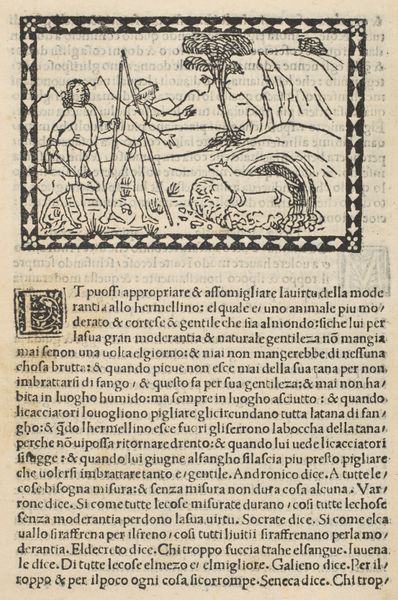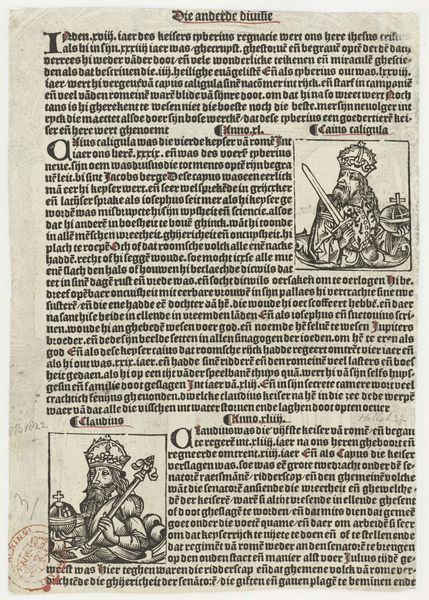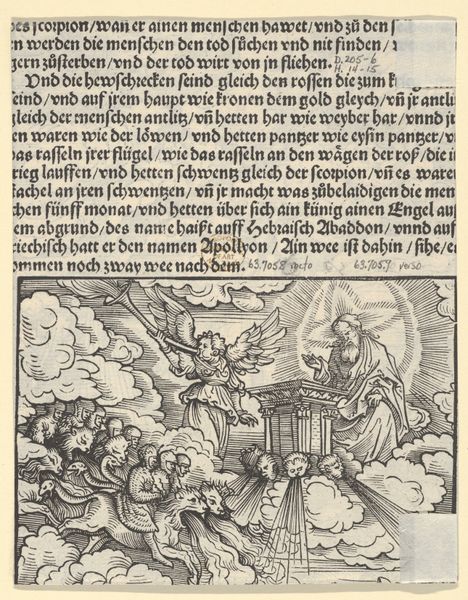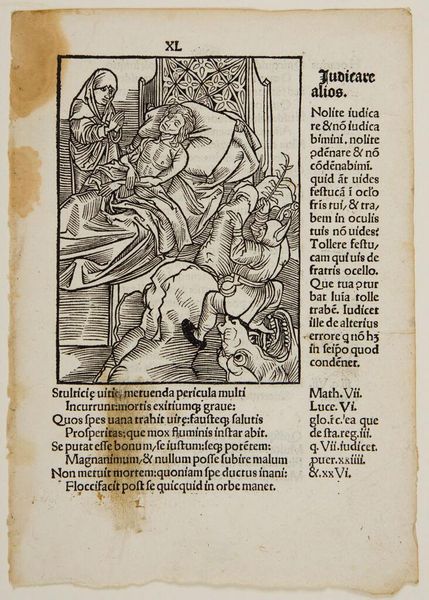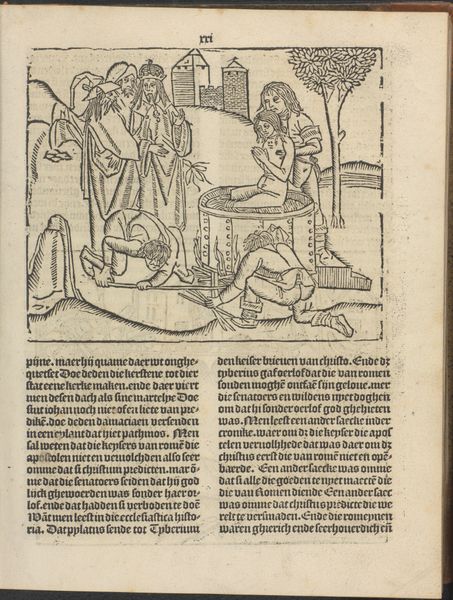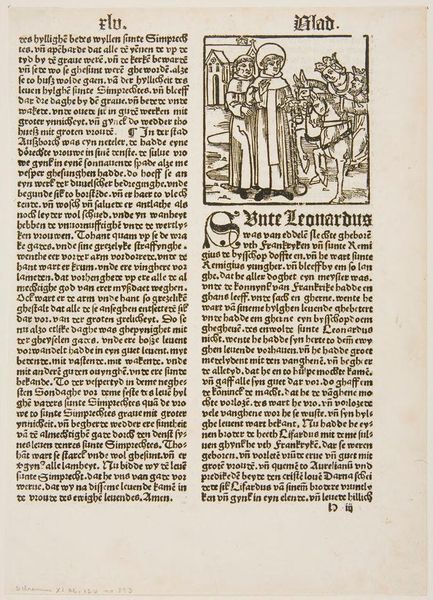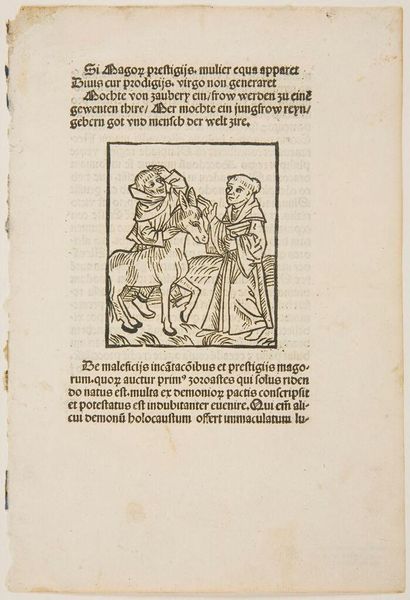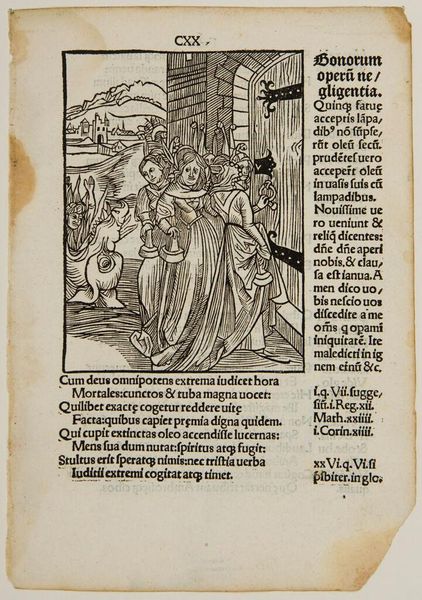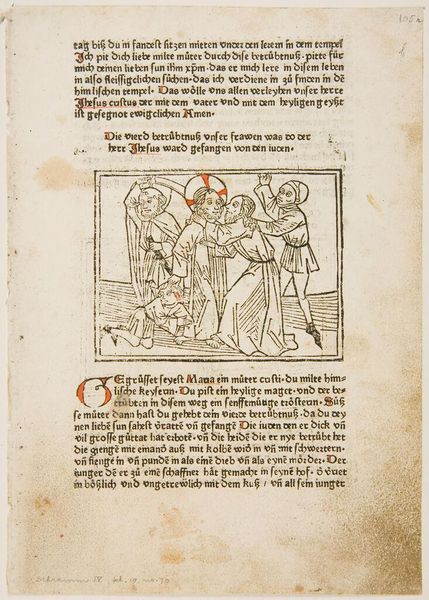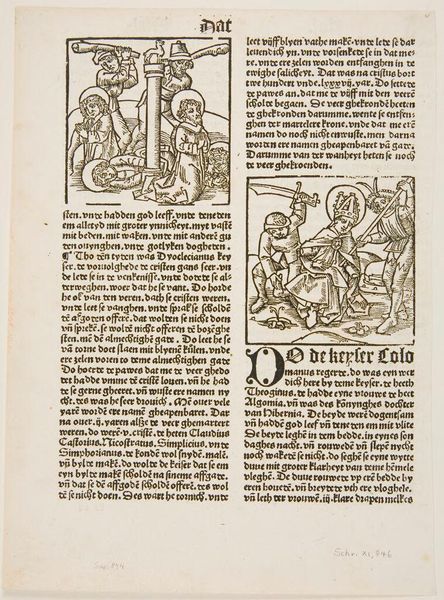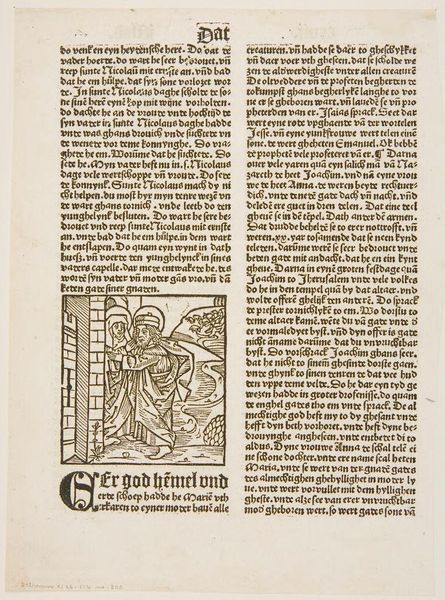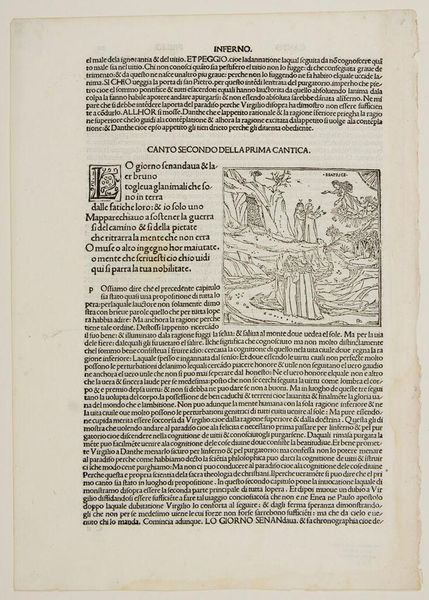
drawing, print, ink, woodcut
#
drawing
#
medieval
#
germany
#
narrative-art
# print
#
book
#
figuration
#
ink
#
woodcut
#
history-painting
#
northern-renaissance
Dimensions: 12 5/8 x 9 1/16 x 1 3/8 in. (32 x 23 x 3.5 cm)
Copyright: Public Domain
Curator: Here we have a page from Bernhard von Breydenbach's "Peregrinatio in terram sanctam," printed in 1486. It’s currently housed at the Metropolitan Museum of Art. Editor: Oh, that’s interesting. The composition is simple and feels like a tableau. I am curious about how the medium, perhaps a woodcut, contributes to its static, yet somewhat unsettling atmosphere. What do you think? Curator: It’s fascinating how Breydenbach's book functioned as both a travelogue and an instruction manual for pilgrimage to the Holy Land. Considering this image is made of woodcut and ink, one must contemplate its relative mass production at that moment. This work gives us insights into the intersections of religious devotion, trade, and visual culture. Editor: Yes, there’s a definite contrast between the supposed spiritual quest and the very practical act of mass-producing images for the pilgrims. Does the image show a real place or an idea of a place? The figures seem stiff. They also communicate a sense of cultural disconnect, something exotic. Curator: Precisely! These early printed images were often colored by hand, contributing to the commodification of religious experience. Look at the clothing and their headdresses! Northern Renaissance artists struggled to convey the customs of the Levant and this awkwardness adds to the piece's value. Editor: It’s like they're trying to package the un-packageable, creating a safe, digestible version of the “Orient.” And in doing so, they expose their own prejudices and limited worldview. Does this attempt at portraying history undermine its legitimacy as an accurate historical depiction? Curator: That tension between aspiration and material limitations really drives our interpretation. This work gives us more than just art, it provides social commentary of the era and the materials utilized speak for a society in search of truth. Editor: Well, contemplating that blend of aspiration, reality, and its cultural packaging leaves me pondering the nature of our own journeys and the filters we carry today. It really sticks with you.
Comments
No comments
Be the first to comment and join the conversation on the ultimate creative platform.
